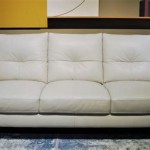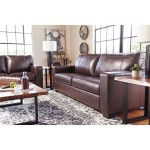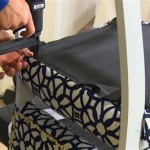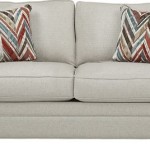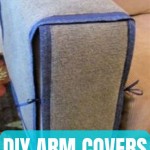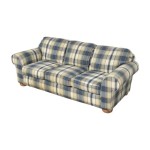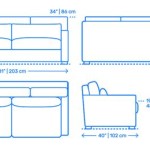How To Make Cushions For Your Sofa: A Comprehensive Guide
Creating custom cushions for a sofa can personalize a living space, enhance comfort, and revitalize existing furniture. This process involves several steps, from selecting appropriate materials to executing precise sewing techniques. This article provides a detailed guide on how to make sofa cushions, covering material selection, measurement, cutting, sewing, and finishing.
Selecting Appropriate Materials
The success of any cushion-making project hinges on the quality and suitability of the chosen materials. These materials encompass the fabric for the cushion cover and the filling that provides the cushion's shape and support. Careful consideration should be given to factors such as durability, comfort, aesthetics, and maintenance requirements.
Fabric Selection: Fabric choice significantly impacts the overall look and feel of the cushions. Several factors should guide this decision. Durability is paramount, especially for cushions that will experience frequent use. Fabrics like canvas, denim, and upholstery-grade cotton blends offer good resistance to wear and tear. Consider the fabric's resistance to fading, particularly if the sofa is exposed to direct sunlight. Solution-dyed acrylics and olefin fabrics are known for their colorfastness.
Cleaning requirements are another crucial element. Some fabrics are machine washable, while others require professional cleaning. For households with children or pets, stain-resistant fabrics are a practical choice. Performance fabrics treated with stain repellents can simplify maintenance. The aesthetic appeal should align with the existing décor. Consider the color, pattern, and texture of the fabric in relation to the sofa and the surrounding room. Sample swatches should be obtained to assess the fabric's appearance under the room's lighting conditions.
Filling Material Selection: The filling material determines the cushion's comfort level and shape retention. Several options are available, each with its own set of advantages and disadvantages. Polyurethane foam is a common choice due to its affordability and versatility. It comes in various densities, allowing for customization of firmness. Higher-density foam provides greater support and durability but may feel firmer.
Polyester fiberfill, often referred to as stuffing, is a lightweight and hypoallergenic option. It offers a soft and plush feel but tends to flatten over time, requiring occasional fluffing or replacement. Down and feather filling provides exceptional comfort and a luxurious feel. However, it is more expensive and requires careful maintenance to prevent clumping. It is also not a suitable option for individuals with allergies. Blends of down and feathers with synthetic fibers offer a compromise between comfort and durability.
Memory foam contours to the body, providing excellent support and pressure relief. It is a good choice for individuals with back pain or other orthopedic concerns. However, memory foam can retain heat, which may be uncomfortable in warmer climates. Shredded foam, which can be polyurethane, memory, or a blend, offers a customizable level of firmness. The filling can be added or removed to achieve the desired comfort level.
Measuring and Cutting the Fabric
Accurate measurements and precise cutting are essential for creating well-fitting cushions. Careful attention to detail in these steps will prevent issues during the sewing process and ensure a professional-looking finished product. This section outlines the process of measuring and cutting the fabric for both the cushion cover and the internal casing, if applicable.
Measuring the Sofa: Begin by measuring the dimensions of the sofa seat and back where the cushions will be placed. Measure the width, depth, and height (or thickness) of the desired cushions. Take these measurements multiple times to ensure accuracy, and record the largest measurement for each dimension. If replacing existing cushions, measure the old cushions as a guide, but be aware that they may have compressed or deformed over time. Consider adding a slight allowance to the depth measurement to account for the cushion's fullness.
Calculating Fabric Requirements: Once the cushion dimensions are determined, calculate the amount of fabric needed. For a simple square or rectangular cushion, the fabric requirement can be estimated as follows: (Width + seam allowance) x 2 + (Depth + seam allowance) x 2 + (Height + seam allowance) x 2 + Extra for Pattern Matching (if applicable). The seam allowance is typically 1/2 inch to 1 inch, depending on the desired seam strength. For cushions with more complex shapes or patterns, a pattern should be drafted and laid out on the fabric to optimize material usage.
Cutting the Fabric: Before cutting, pre-wash the fabric to prevent shrinkage after the cushions are made. Iron the fabric to remove any wrinkles or creases. Lay the fabric on a flat, stable surface, such as a cutting table or the floor. Use a rotary cutter, fabric scissors, and a cutting mat to cut the fabric pieces according to the calculated dimensions. Ensure that the fabric is aligned correctly and that the cutting lines are straight. For patterned fabrics, pay close attention to pattern matching, ensuring that the pattern aligns seamlessly across the seams. Label each fabric piece to avoid confusion during the sewing process.
Creating an Internal Casing (Optional): For cushions filled with loose materials like down, feathers, or shredded foam, an internal casing is recommended to contain the filling and prevent it from shifting excessively. The casing can be made from muslin or another inexpensive, tightly woven fabric. Cut the casing pieces slightly smaller than the finished cushion dimensions to allow the cushion cover to fit snugly.
Sewing Techniques for Cushion Construction
Proper sewing techniques are crucial for creating durable and aesthetically pleasing cushions. This section details the steps involved in assembling the cushion cover, including seam construction, zipper insertion, and finishing techniques. It also covers the construction of an internal casing, if applicable.
Constructing the Internal Casing (if applicable): Sew the casing pieces together using a straight stitch, leaving one side open for filling. Turn the casing right side out and fill it with the chosen filling material. Distribute the filling evenly and adjust the amount to achieve the desired firmness. Once the casing is filled, stitch the opening closed using a blind stitch or a machine stitch. The internal casing should fit snugly inside the cushion cover.
Assembling the Cushion Cover: Begin by pinning the fabric pieces together, right sides facing, along the seams. Use a matching thread and a straight stitch to sew the seams, maintaining a consistent seam allowance. Reinforce the seams at the corners with backstitching to prevent them from unraveling. For cushions with a zipper closure, insert the zipper along one of the seams. Use a zipper foot on the sewing machine to sew close to the zipper teeth. The zipper should be long enough to allow for easy insertion and removal of the cushion insert.
Inserting a Zipper: There are two primary methods for inserting a zipper: a centered zipper and a lapped zipper. A centered zipper is sewn with the zipper centered along the seam, creating a clean and symmetrical look. A lapped zipper has one side of the fabric overlapping the other, concealing the zipper. Choose the zipper insertion method based on personal preference and the desired aesthetic.
Finishing Techniques: After sewing the seams and inserting the zipper, turn the cushion cover right side out. Push out the corners to create sharp, defined edges. Consider adding piping or welting around the edges of the cushion cover for a decorative touch and to reinforce the seams. Piping is a fabric-covered cord that is sewn into the seam, adding a professional and polished look. Topstitching along the seams can also enhance the appearance and durability of the cushion cover.
Adding Ties or Buttons: For cushions that will be attached to the sofa, such as back cushions, consider adding ties or buttons. Ties can be sewn to the corners of the cushion and then tied to the sofa frame. Buttons can be sewn to the back of the cushion, and corresponding loops or buttonholes can be attached to the sofa. Ensure that the ties or buttons are securely attached to prevent them from tearing or coming loose.

Made My Own Sofa Cushions No Seams Diy Pt 2

Diy A Sofa Cushion Cover Without Zipper Professional Look You Will Wesley Hall Camden

Diy Couch How To Build And Upholster Your Own Sofa
How To Sew A Box Cushion Cover Noelle O Designs

How To Stuff Saggy Couch Cushions Under 50 Thetarnishedjewelblog

Diy Couch How To Build And Upholster Your Own Sofa

How To Make A Cushion Cover And Other Slipcover Tutorials

Diy Outdoor Cushions A Erfly House

Making Cushions For Tiny House Storage Sectional Ana White

Diy Couch How To Build And Upholster Your Own Sofa

